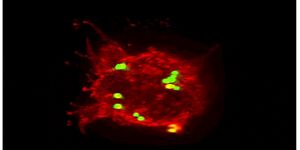This video from Nature discusses the pathophysiology of amyotrophic lateral sclerosis, or ALS. Learn about what happens to nerve cells or neurons affected by ALS, made famous by the 'ice-bucket challenge' research fundraising effort of 2014. The disease impacts neurons in the spinal cord and brain that control movement. They begin to degenerate, and over time they die. You can see an animation of what happens in the cells.
In the affected neurons, there is a critical buildup of proteins. As those proteins build up, they damage other parts of the cell in a domino effect that ultimately affects the genetic material in the cell. Other dysfunctions in the cell are discussed.
Around 6,000 people in the United States are diagnosed with ALS every year; most who get the disease are between 40 and 70 years old, although it can affect younger people. There seem to be some risk factors for developing the disease (which is not contagious). For example, military vets are twice as likely to get the disorder, and it is around twenty percent more common in men. A lot more research is needed to combat this disease.








